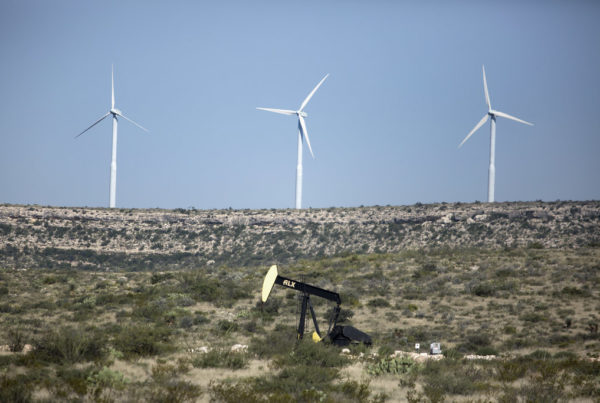It’s an understatement to say that the U.S. economy has an inflation problem. A recent report by the U.S. Commerce Department showed consumer goods had the highest year-over-year price increase in nearly four decades.
But Waco-based economist Ray Perryman, president and CEO of The Perryman Group, tells Texas Standard there’s no need to fear a return of the extreme inflation of the 1970s. He spoke to the Texas Standard about why. Listen to the interview with Perryman in the audio player above or read the transcript below.
This interview has been edited lightly for clarity.
Texas Standard: When we bring up inflation, a lot of people think about the crisis back in the ’70s. What are the differences between what’s happening now and what happened then?
Ray Perryman: Fortunately, there are a lot of differences. We had pretty well institutionalized inflation back then in a variety of ways. Those of you are old enough like me to remember a simple passbook savings account – a savings account at a local bank – which now pays something less than 1% percent, paid five-and-a-quarter percent a year. So I mean, that was, you basically baked in that much. That was the risk-free rate that you could get on a savings account.
So, in essence, you’d sort of make it in 5%, 6%, 7% percent inflation before you even started the process. It was a very, very difficult time that was right at the end of the Carter administration, and it was what allowed President Reagan – then-President or then-candidate Reagan – to talk about the “misery index.” And and it was a very, very difficult time in our history, and we’re not seeing anything structurally like that right now. But nonetheless, we, as you said, we do have an issue on our hands.
Should we sigh a breath of relief, or are there any indicators about when we might see inflation start to edge back down? Or how do you read it?
I think we can certainly breathe a sigh of relief that it’s not like it was back then, and a lot of people try to draw that comparison. It just is a totally different world. But we can say is this was driven by two things: the classic, old-time definition of, inflation is too much money chasing too few goods. We’ve got both those things going on right now, but they’re both driven by temporary phenomenon.
The too-much-money is everybody out and about again after being cooped up for awhile. Some people have extra money from all the stimulus programs. There’s just a lot of money out there. Wages are up, so there’s a lot. There’s money out there to spend and people are anxious to spend it. That’s the too-much-money part. The too-few-goods, of course, is the supply chain. We basically shut down $120 trillion-dollar engine. That’s a world economy, and trying to restart it has not been easy. And in the process, we’ve had some supply-chain issues which are being worked on, but they haven’t been fixed yet.
So the good news about this one is it’ll take a few months. This is going to be with us for a while. But the underlying causes are things that are not only fixable, but market forces incentivize them to be fixed.
You say too much money out there, but there are a lot of people who don’t have enough money, and I’m wondering if this has a real disproportionate impact on those folks.
Oh, there’s no question. I mean, inflation always hurts those who are on fixed incomes who have very limited resources. And, you know, a lot of people find themselves in that situation, particularly when you have some necessities like food and gasoline that have gone up very significantly in terms of price. And yes, that’s always one of the real things about inflation. It’s, in essence, a tax that, you can view it that way. And it’s a tax that falls disproportionately on those who are least able to afford it: those who are not getting a pay increase, those who are who are living on a fixed income are those who have limited resources. That’s always the case. And that’s one of the reasons why it’s very important that we bring this under control.
You’ve seen the Federal Reserve start to move in that direction, do a lot of things that I think are appropriate at this point in time to deal with it. But that, as I say, at least we can take some comfort in the fact that the underlying causes are the kinds of things that work themselves out over time.
Do you have any advice for consumers who might be considering a big purchase, or wondering whether they should put it off over the next year? What do you tell them?
That’s always an individual decision driven by a lot of different factors. I don’t pretend to be a financial adviser. But but I would say there are some areas where we know prices are going to come down pretty significantly. For example, used cars: once we get the chips in the new cars and the new car to the lot, those prices are going to collapse. So if you’re trying to sell one, I would say now’s the time to sell. If you want to buy one, I would say wait awhile.
So, you know, there are some things like that we know about. Otherwise, that’s pretty much an individual decision in terms of what your resources are and that sort of thing. And remember, when we talk about inflation going down, we’re probably not talking about prices going down. We’re talking about the rate of increase in prices going down. So you need to remember, inflation is the increase in prices, not the absolute level. We’re not saying things will be cheaper next year than they are now. We’re saying they won’t be as much more expensive in a year as they as they have been over the course of this year.














